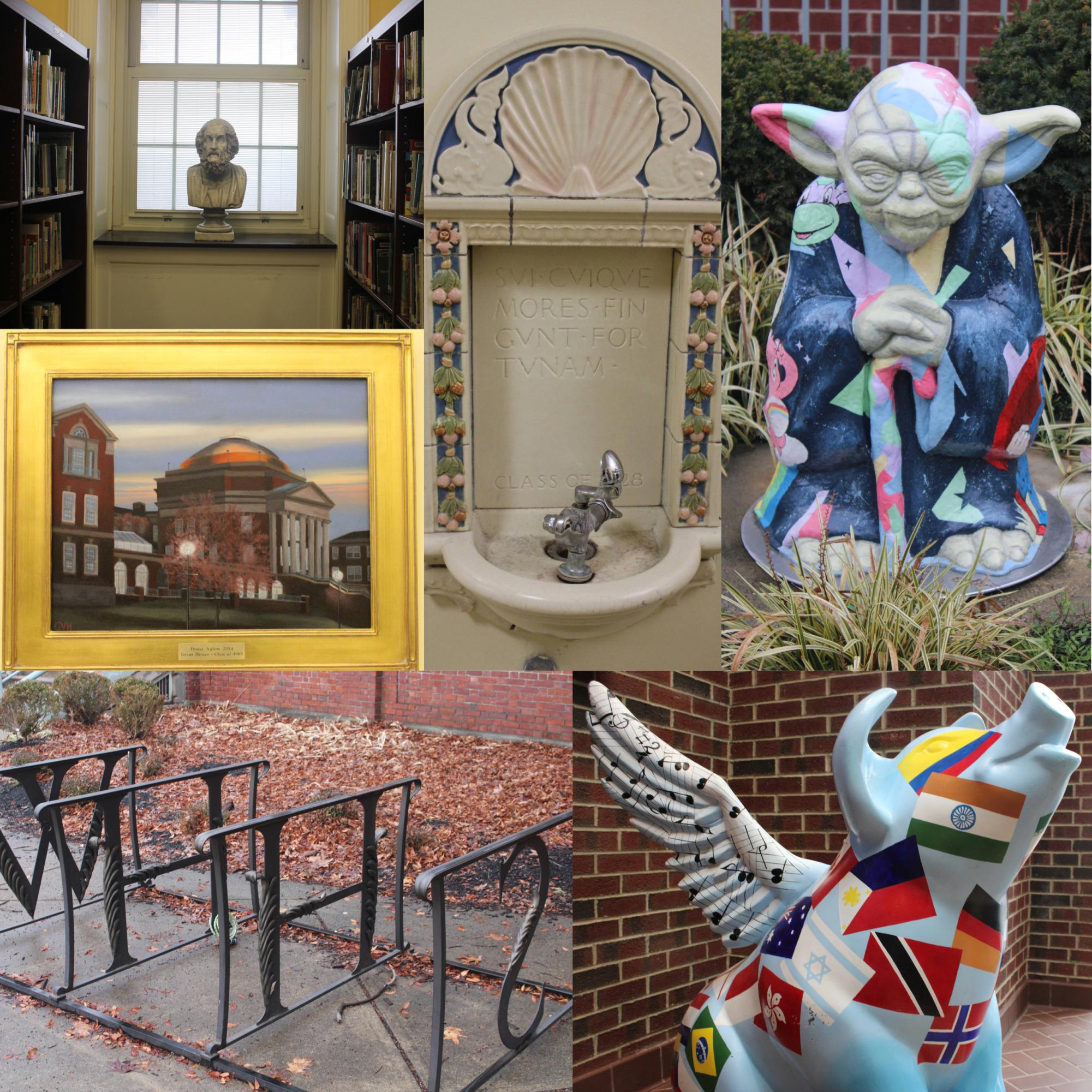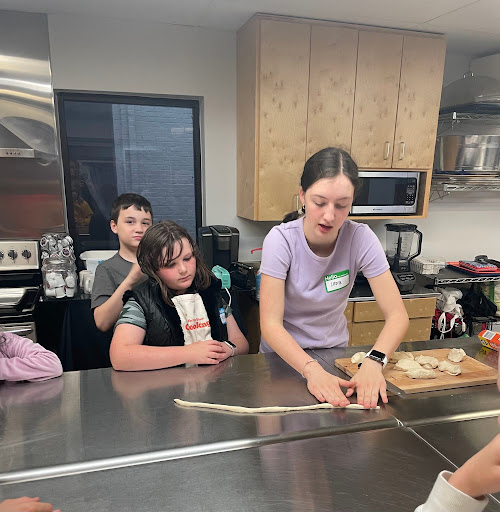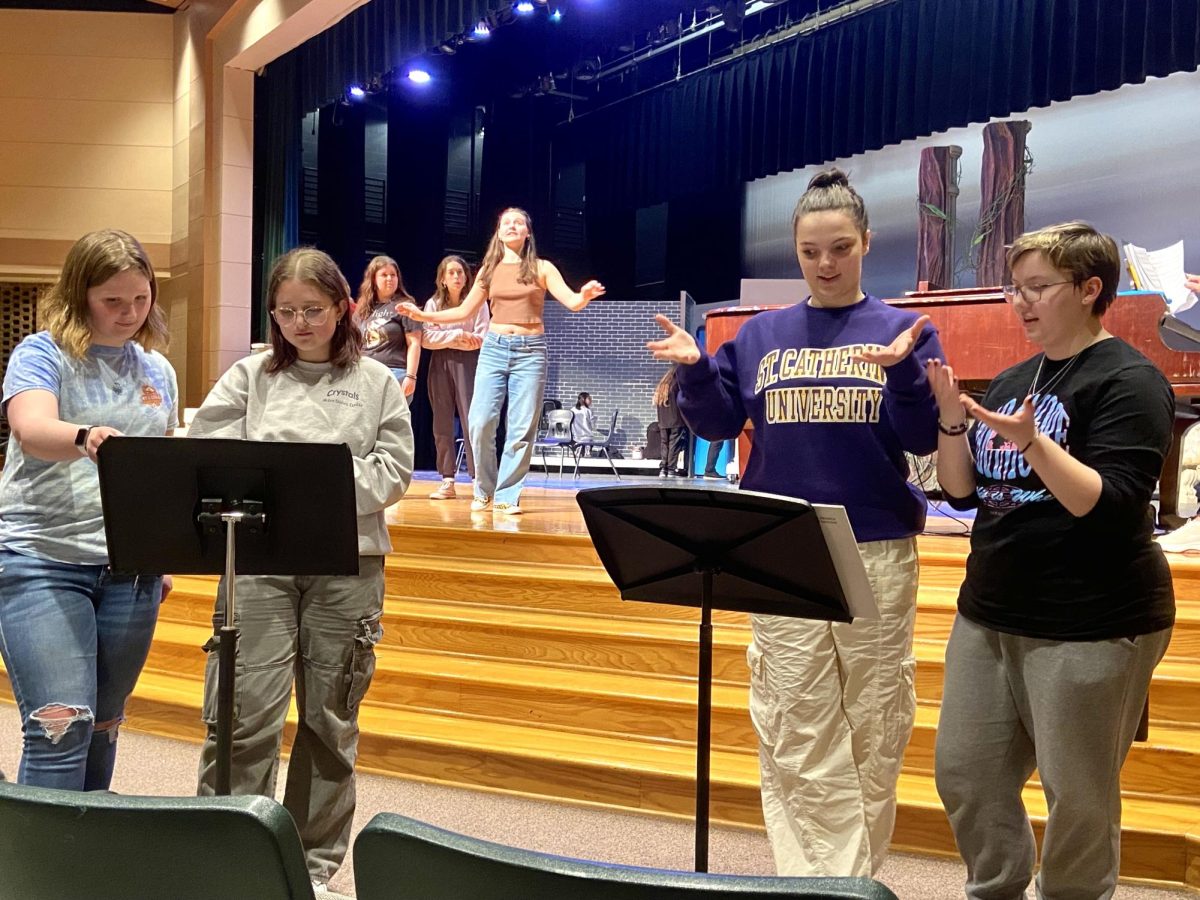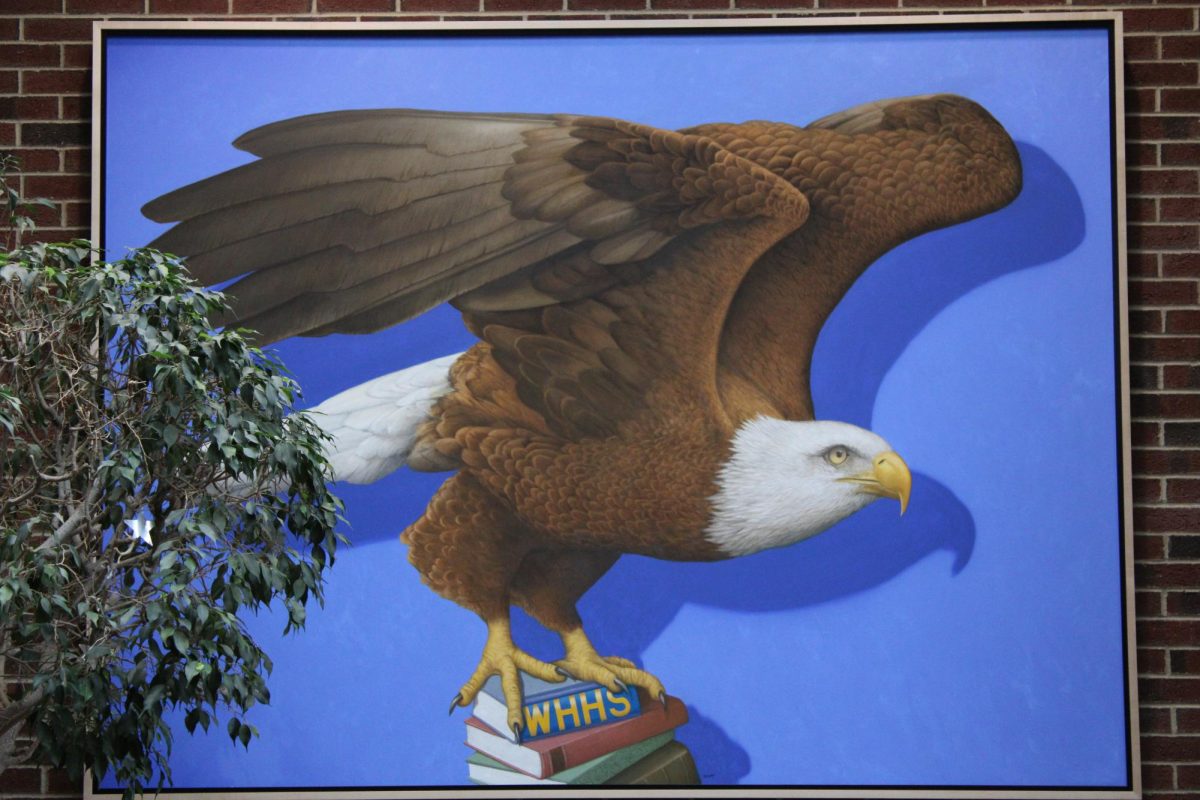Students walk the same routes through the hallways hundreds of times as they go from class to class; however, in their rush many don’t notice the incredible art and architecture that surrounds them on a daily basis.
“I just feel like art adds a lot. [It’s just that] kids don’t know anything else. If you go to other schools, they don’t have fine art like that, just in the halls,” Debbie Heldman, executive director of the Alumni Foundation, said. “The new schools are all modern cinder blocks. We have depth.”
One recent piece of art that many may have noticed, but do not know the story behind, is the striking cobalt blue painting of an eagle that watches over passing students in the arcade. The eagle was a gift from renowned nature artist Tom Palmore, who originally toured WHHS with his partner, an alum. While Palmore never attended WHHS, during the tour he was very impressed with the school, sparking his creativity.
“[Palmore] said, ‘Well, how about I paint you an eagle?’… Fast forward to right before COVID [and] I hadn’t heard from him. Then I get this email: ‘Hi Debbie, we’re shipping you the painting,’” Heldman said. “I open [it] up and I’m like, ‘Oh my god. This is an oil painting of an eagle.’”
Palmore studied at the Pennsylvania Academy of Fine Arts in Philadelphia and is known for his attention to detail, capturing animals in almost photographic realism as featured in his book “Earthlings: The Paintings of Tom Palmore.”
“My paintings are about other earthlings that we share this planet with… and about our relationship with them,” Palmore said.

Another vibrant piece in the arcade is the iconic lifesize blue pig covered in drawings of flags. The pig is from a former Cincinnati event called the ‘Big Pig Gig,’ in which local artists and schools decorated more than 400 pigs and placed them around the city. The event took place in the summer of 2000 and brought in an estimate of $170 million from tourists eager to see the namesakes of ‘Porkopolis’.
A vast majority of the art around WHHS was funded or created by alums. Two examples of this are the four oil paintings of WHHS in the front hall by the Blair entrance, which were painted by Grant Hesser, ‘65, and the metal WHHS bike rack, which was made by an alum with a passion for welding.
“When we have reunions here, [the] class looks at a wishlist of things that I’ve come up with and [decides what to] raise money for,” Heldman said. “That’s how we get things like student travel, the bicycle rack, the Veterans Memorial, all the art benches, the wood benches, if you look at the end it says class of 1963. These are all gifts, things that I’ve come up with to enhance the facility.”
Other interesting art pieces include the Rookwood Pottery water fountains in the main hallway next to the auditorium, which were gifted to the school by the class of 1929. In addition to this, Rookwood tiles also line the library ceiling, depicting Nimrud from the ancient Assyrian Empire.
Directly across from the Rookwood fountains sits a more hidden treasure. In room 2301, nine murals by esteemed artist Paul Ashbrook line the walls. Ashbrook’s wife was a French teacher at WHHS from 1922 until her retirement in 1949. According to the book “An Expression of the Community: Cincinnati Public Schools’ Legacy of Art and Architecture,” they depict French provinces and were presented to the school in 1943.
“Because of the murals, this classroom still has high ceilings, but other classrooms do not,” Dawn Wolfe, the English teacher who teaches alongside the murals, said. “Even my projector is anchored differently, [and] I have heating and cooling that is different from [other classrooms] because of the murals. They had to make some adjustments because we couldn’t mess this up.”
Only one of the murals is al fresco, meaning it was painted directly onto the wall. The remaining eight paintings were done on panels that Ashbrook did in his studio, allowing them to be removed from the wall.

(Elena Brown)
“These were all taken down and professionally cleaned and stored while the renovation was going on,” Wolfe said. “Then they came back in and they were putting them back up days before we moved back in. I was working in here in a hardhat while they were trying to finish up the room.”
For Wolfe and many others, the challenges that come along with preserving the art around the building are greatly overshadowed by their aesthetic and historical appeal.
“It is an honor to be able to teach in a work of art every single day,” Wolfe said. “It’s amazing that we have this piece of history. We are so lucky to have the Rookwood [artwork] and the different architectural design that makes our building distinctly different from other schools; even the paintings that we have, the statues. What you all get to learn in is amazing, [and] I’m glad that you’re able to do so.”
This story was originally published on The Chatterbox on January 30, 2024.






![It was definitely out of my comfort zone to get [the dress] and decide I loved it enough not to wait and risk not having something that memorable.](https://bestofsno.com/wp-content/uploads/2024/04/Precious_20180902_JRS_00008_ed1.jpg)


![Sophomore Sahasra Mandalapu practices bharatanatyam choreography in class. These new dances will be performed in an annual show in February. Mandalapu found that practicing in class helped her overcome stage fright during her performances. “When [I] get on stage, Im nervous Im going to forget, even though Ive done it for so long,” Mandalapu said. “Theres still that little bit of stage fright [when] I second-guess myself that I dont know it enough, but I do because Ive been practicing for a whole year.”](https://bestofsno.com/wp-content/uploads/2024/05/Sahasra-6-Large-1200x844.jpeg)

![In their full runway outfits, (from left) Audrey Lee 25, Olivia Lucy Teets, 25, Fashion Design teacher Ms. Judy Chance, and Xueying Lili Yang pose for a photo. All three girls made it to Austin Fashion Week by getting in the top 10 in a previous runway show held by Shop LC.
[I like my students] creativity and how they can look at a fabric and make it their own, Ms. Chance said.](https://bestofsno.com/wp-content/uploads/2024/04/IMG_9686-e1714088765730-1129x1200.jpeg)














![IN THE SPOTLIGHT: Junior Zalie Mann performs “I Love to Cry at Weddings,” an ensemble piece from the fall musical Sweet Charity, to prospective students during the Fine Arts Showcase on Wednesday, Nov. 8. The showcase is a compilation of performances and demonstrations from each fine arts strand offered at McCallum. This show is put on so that prospective students can see if they are interested in joining an academy or major.
Sweet Charity originally ran the weekends of Sept. 28 and Oct. 8, but made a comeback for the Fine Arts Showcase.
“[Being at the front in the spotlight] is my favorite part of the whole dance, so I was super happy to be on stage performing and smiling at the audience,” Mann said.
Mann performed in both the musical theatre performance and dance excerpt “Ethereal,” a contemporary piece choreographed by the new dance director Terrance Carson, in the showcase. With also being a dance ambassador, Mann got to talk about what MAC dance is, her experience and answer any questions the aspiring arts majors and their parents may have.
Caption by Maya Tackett.](https://bestofsno.com/wp-content/uploads/2024/02/53321803427_47cd17fe70_o-1-1200x800.jpg)
![SPREADING THE JOY: Sophomore Chim Becker poses with sophomores Cozbi Sims and Lou Davidson while manning a table at the Hispanic Heritage treat day during lunch of Sept 28. Becker is a part of the students of color alliance, who put together the activity to raise money for their club.
“It [the stand] was really fun because McCallum has a lot of latino kids,” Becker said. “And I think it was nice that I could share the stuff that I usually just have at home with people who have never tried it before.”
Becker recognizes the importance of celebrating Hispanic heritage at Mac.
“I think its important to celebrate,” Becker said. “Because our culture is awesome and super cool, and everybody should be able to learn about other cultures of the world.”
Caption by JoJo Barnard.](https://bestofsno.com/wp-content/uploads/2024/01/53221601352_4127a81c41_o-1200x675.jpg)





